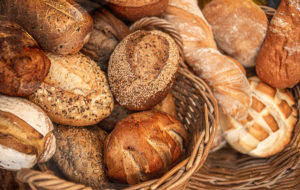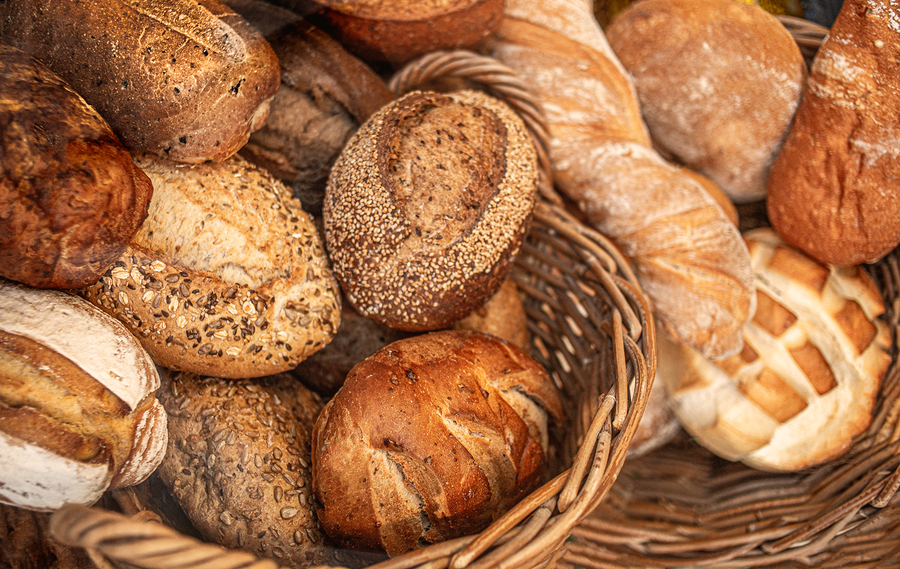
The growth in demand for artisan bread is showing no signs of stopping. As consumers become more interested in authentic products made with ingredients they understand, the bakery aisle is quickly transforming from shelves of traditional sandwich bread to baskets of fresh baguettes, Ciabatta, premium rolls, and so on.
Industrial bakeries are responding by revamping their lines to produce these artisan-style breads at much higher throughputs than were previously possible. This is thanks to equipment improvements that allow bakers to process the fragile dough at high capacities. The latest equipment is so good that in many cases it’s even gentler than human hands!
Let’s look at several challenges of producing artisan bread and how today’s top equipment tackles them.
Challenge: High hydration dough
A major hallmark of artisan bread is the high hydration level, aka water content, of the dough. A wet dough allows bakers to achieve the airy open crumb desirable in products like baguettes. The trick, of course, is that wet doughs are very sticky, and that makes them difficult to process on traditional equipment.
There are a couple of ways bakery equipment has been modified to handle high hydration doughs. For example, some equipment uses a very small amount of oil, but this has the disadvantage of adding even more liquid to an already wet dough.
The DrieM Sheeting Line takes a different approach, which allows it to handle breads with anything from very low to very high percentages of liquid ingredients (42% to 90+%). The surfaces are specially treated to prevent sticking, and then a small amount of flour is used during handling — very similar to how you’d keep dough from sticking to your hands when making bread at home.
Challenge: Gassy dough
Artisan-style dough is also very gassy compared to traditional pan bread. The dough must be handled very gently and as little possible so it can retain its gassiness and the final product will have the desired texture.
Breadmaking equipment has evolved in a couple of ways to not damage the dough:
- No falling heights — On a traditional bread line, the dough may fall from a machine to a conveyor. Artisan bread equipment eliminates these heights so the dough isn’t degassed by impact.
- Stretching, not pressing — Traditional bread lines use cross rollers to widen the dough sheet by pressing it down. Artisan bread equipment uses a uniquely engineered reduction head to gently stretch the dough instead.
- Extra support — Overall, the key to not damaging wet, gassy dough is to provide the support it needs. Artisan bread equipment does this throughout the entire process. For example, the DrieM Sheeting Line uses three sets of offset rollers to make the dough sheet, rather than the two sets commonly found on traditional pan bread lines. This provides extra support so that the dough doesn’t break as it enters the conveyor.
Read more: How Modern Bakery Equipment Can Produce Artisan-Style Bread That Looks and Tastes Homemade
Challenge: A non-standard appearance
Perhaps the biggest challenge of producing artisan bread at scale is making it look homemade, which means nonuniform. This seems counter to the whole idea of industrial production, but equipment manufacturers have found some clever ways to address it.
- Cutting based on weight, rather than size — On a traditional bread line, the dough sheet is cut into units based on dimensions, which results in every loaf, bun, or roll looking exactly the same. Artisan bread lines cut units based on weight instead. A weighing system sends signals to the guillotine cutter to tell the machine to speed up or slow down. This innovation achieves both nonuniformity and consistency.
- Scoring based on unit dimensions — Scoring is a common feature of artisan bread. Since the products aren’t all the exact same shape, the scoring needs to be individually tailored for each unit. Today’s scoring systems have sensors that measure the length, width, and height of each loaf and then create the cuts based on those measurements.
Read more: Equipment Overview: A Complete Production Line for Artisan Bread
Challenge: Product variety
Finally, for the most part, the days of running the same product 24/7/365 are over. Today’s consumers want variety, which means bakery equipment must be flexible, with fast and easy changeover.
The DrieM Dough Sheeting Line for cut and molded products can be used to create everything from Ciabatta and baguettes to sandwich rolls and scones. Best of all, no tools are required for changeover.

